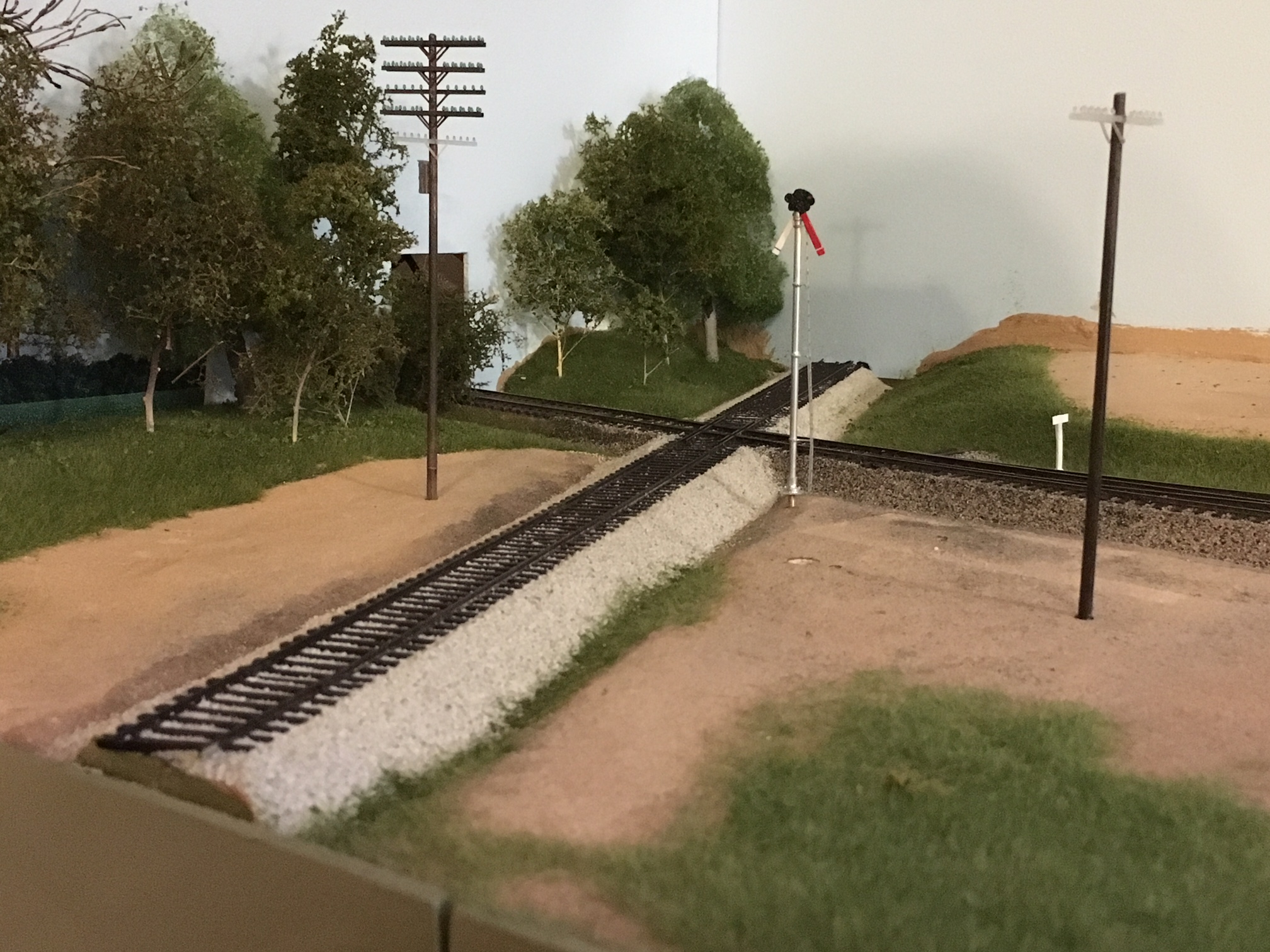Here’s a post with a decidedly British flavor.
Modelu
A few weeks ago I ordered figures from a vendor in Bristol named Modelu (pronounced Model You). The box arrived at the nearby Deutsche Post office, and my half-German wife dutifully went over there, paid the import tax, and brought the box home. Here’s what was in the box:

How exciting!

Modelu is a British vendor that makes finescale 3D-printed figures. A few guys on the Proto-Layouts list discovered Modelu online, and I offered to make a large order to try and save everyone some import tax.

Six of us combined for an over-$400 order for 60 figures. Above is shown a 1:29 figure ordered for Craig Townsend. I ordered seven HO scale figures and the other guys each ordered between five and 15 figures. The models are 3D scanned and printed to amazing detail–better than Preiser which up until now I’ve always considered the “gold standard”.
The Modelu figures are one-of-a-kind. Not only is the detail amazing but the poses are very natural, which is what I would expect being 3D scanned. This bloke, below, will go in my coal yard.

I highly recommend Modelu figures, but be careful about shipping and import taxes. The order I made was 288 Euros, which converted to $408 U.S. dollars. The Dollar-to-Euro and Dollar-to-Pound exchange rate is not working in the U.S.’s favor in the last few months, but still at about $4.50 a figure I think the price isn’t too bad.
Shipping is the “gotcha”. Modelu charges shipping, and then there’s the import tax, or “Brexit Tax” as my wife calls it. For our shoebox-size package the import tax was a whopping $105 U.S. On top of that, I sent five packages of figures to the various Proto-Layouts guy in the U.S.–another $8.50 U.S. each.
STILL…it was much cheaper to ship this way than shipping to each of us individually. Had each of us ordered individually it would’ve cost about $50 U.S. per package. So be careful when you order…make it count…
I give Modelu my highest recommendation. If you find yourself in Bristol, you can go to the shop and they will 3D-scan you, and you can put model figures of yourself on your layout. Or give models of yourself as gifts–wouldn’t that be funny. You can find Modelu online at Modelu – Finescale Figures (modelu3d.co.uk).
The Traverser

Most of you are aware that I’m building a little switching layout in my third floor train room called Hermitage Road. The room is small, and the little layout is only seven feet long. I had even less room for a staging yard, so instead of trying to cram in a traditional US staging yard with ladders on each side, I built a British-style traverser table to service the layout. See above.
The whole traverser table is less than 60 inches long. The design has a single track to/from the layout at the left. The yard will have five tracks, each with enough room for five 40-foot cars and a single engine. There will be five short tracks on the opposite end to stage cars for runaround moves and engine storage. The thing works just like a switching yard without all the space-eating switches. I can use an open track to get around a train to push cars in, or pull cars from the end for trailing point switches.
It took me two Saturdays to build it. I made up my own plan but had to build it twice. The first version, seen below, had a 1/4-inch top. During assembly I discovered that the 1/4-inch wood top had a slight twist, which prevented it from lining up on both sides of the table. So I took the whole thing back to the wood shop on Ramstein Air Base and rebuilt it–this time with a 3/8-inch plywood top.

Here’s a photo of the first version, below, mocked up on the garage floor. You can see how small it is–compare the iPad at the top right of the photo.

Below. Here’s a photo of Version 2.0 with the 3/8-inch plywood top, taken one week later. You wouldn’t believe how much fiddling was required to get the table level on both ends. I used lots of shims of various thicknesses to get the table as level as possible for tracklaying.

I used a nice set of German ball-bearing drawer slides to provide as smooth a ride as possible. Cost: $40 U.S. for the pair. It slides very smoothly and even has a “soft-closing” feature.

Above. Here’s the second version of the table set up in position but not yet installed. The drawer slides have a just enough friction to keep the sliding table in position. It is very easy to move back and forth.
Below. Here’s a view of the layout with the traverser set up in position. The layout is just a bit shorter than seven feet; the traverser table is even shorter.

And finally, one last traverser photo, below. This was definitely worth my time and trouble. It cost about $100 up to this point, and that includes all the wood and time I had to pay for at the base wood shop ($12.50/hr). I would’ve spent that much just on turnouts for a traditional staging yard. The traverser is incredibly versatile. I’m glad I built it.

Below. Here’s the whole layout. I’m standing where the traverse table will be installed.

Hope you blokes have a great Memorial Day weekend. As you pray to our great God of power, and grace, please take a moment to remember all those fine young men that sacrificed their lives for us, that we might live free for a little bit longer.

Above: Strasbourg, France. Just as the Son of Man did not come to be served, but to serve, and to give his life as a ransom for many. Matthew 20:28











































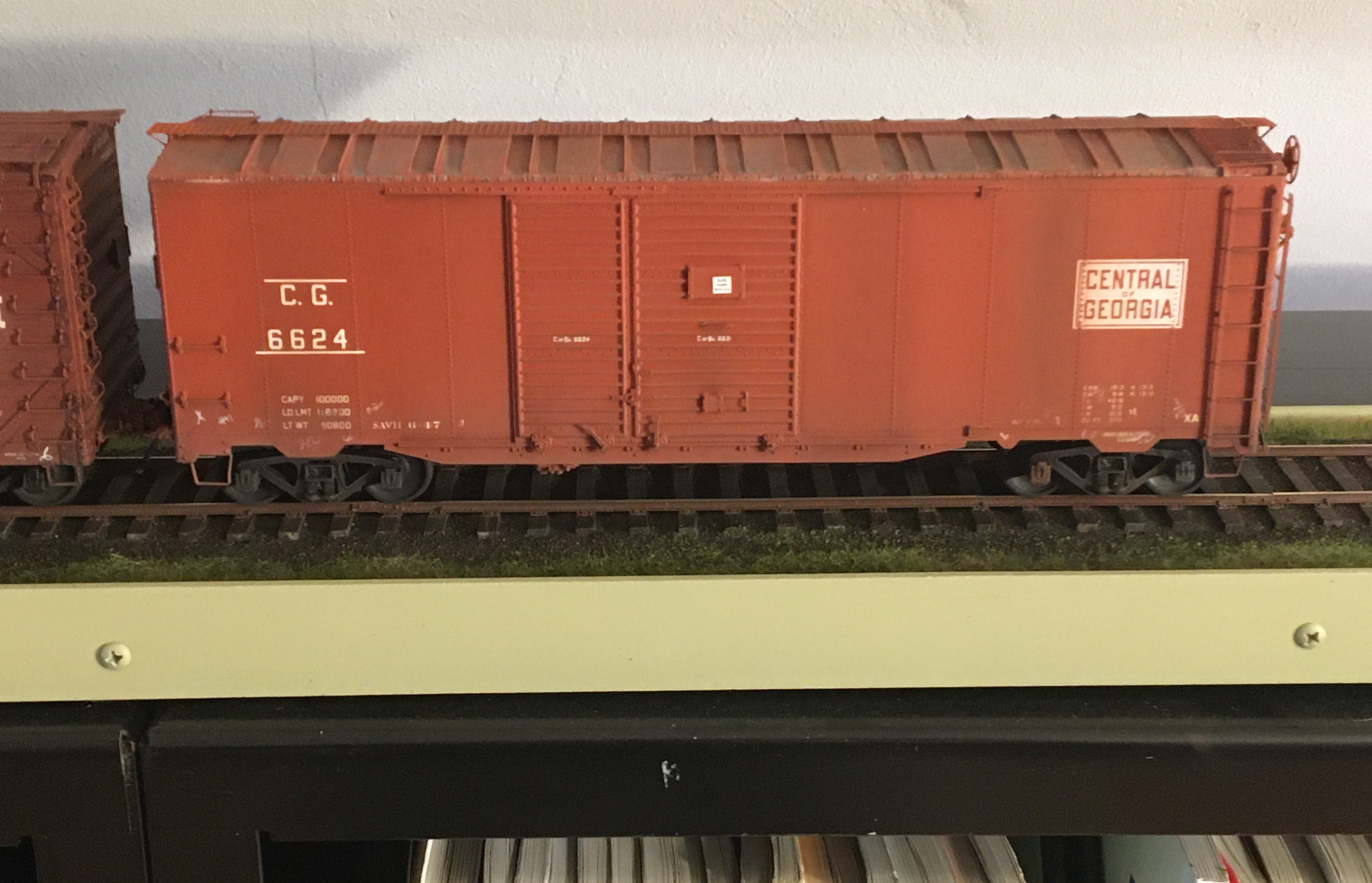























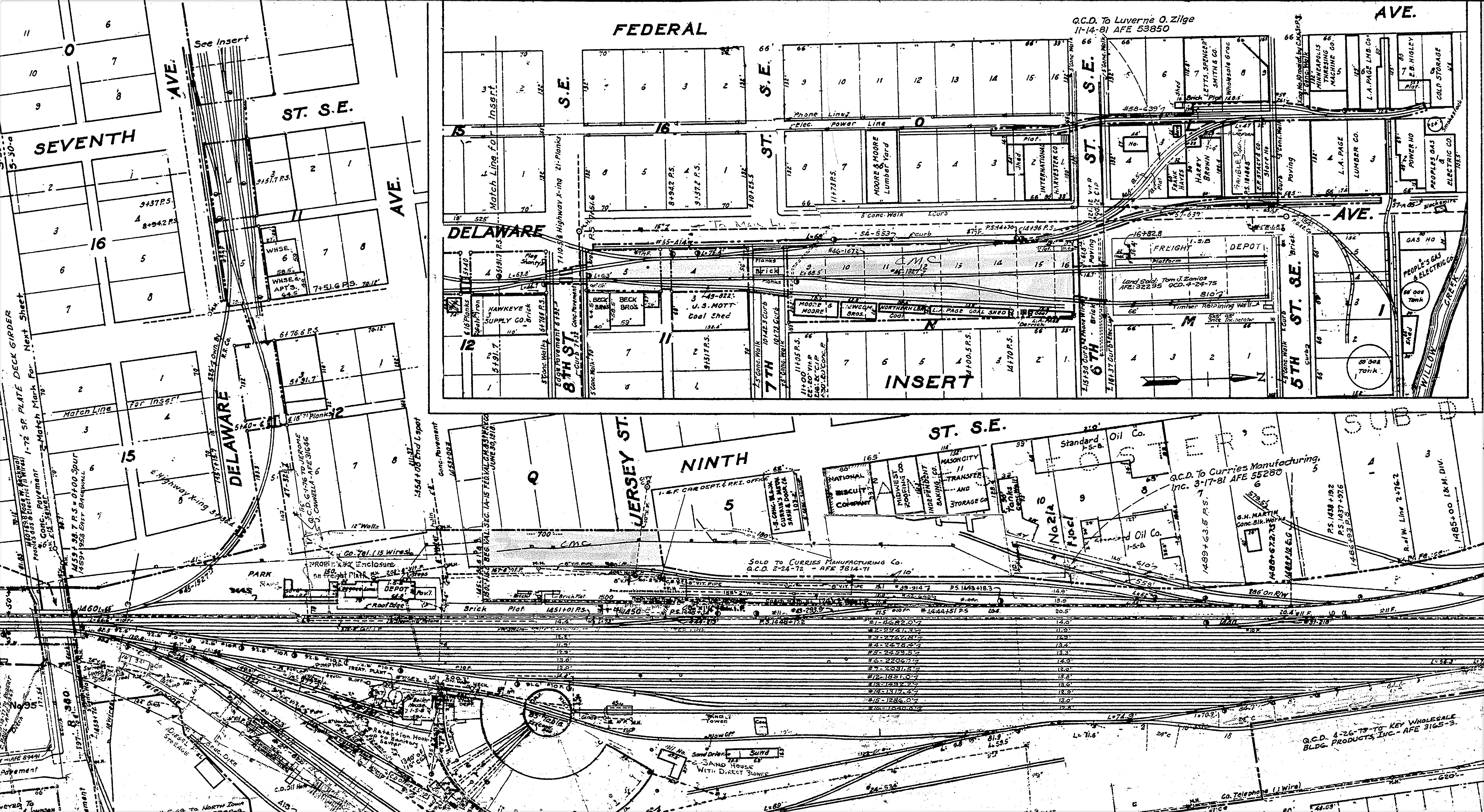












































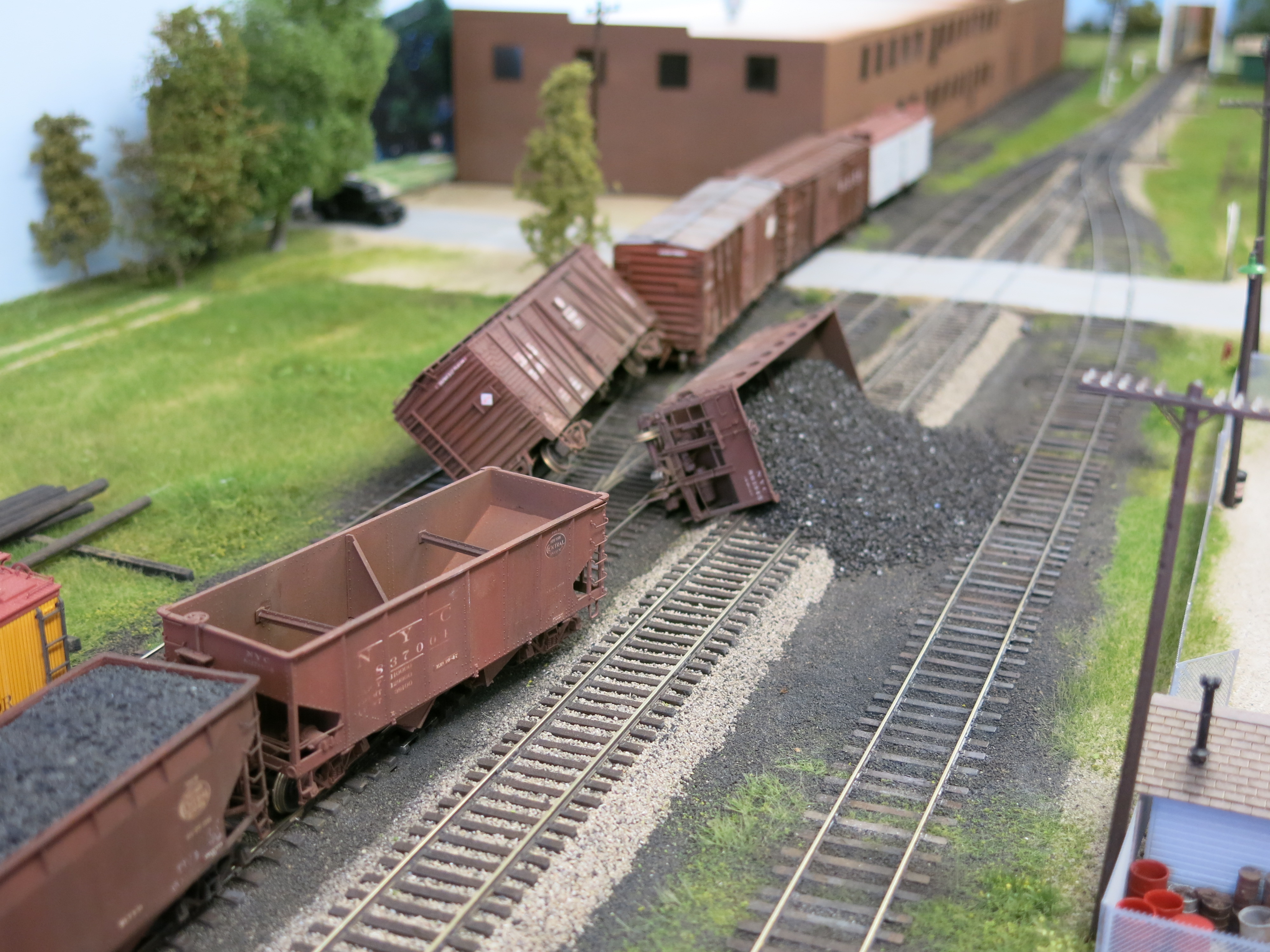

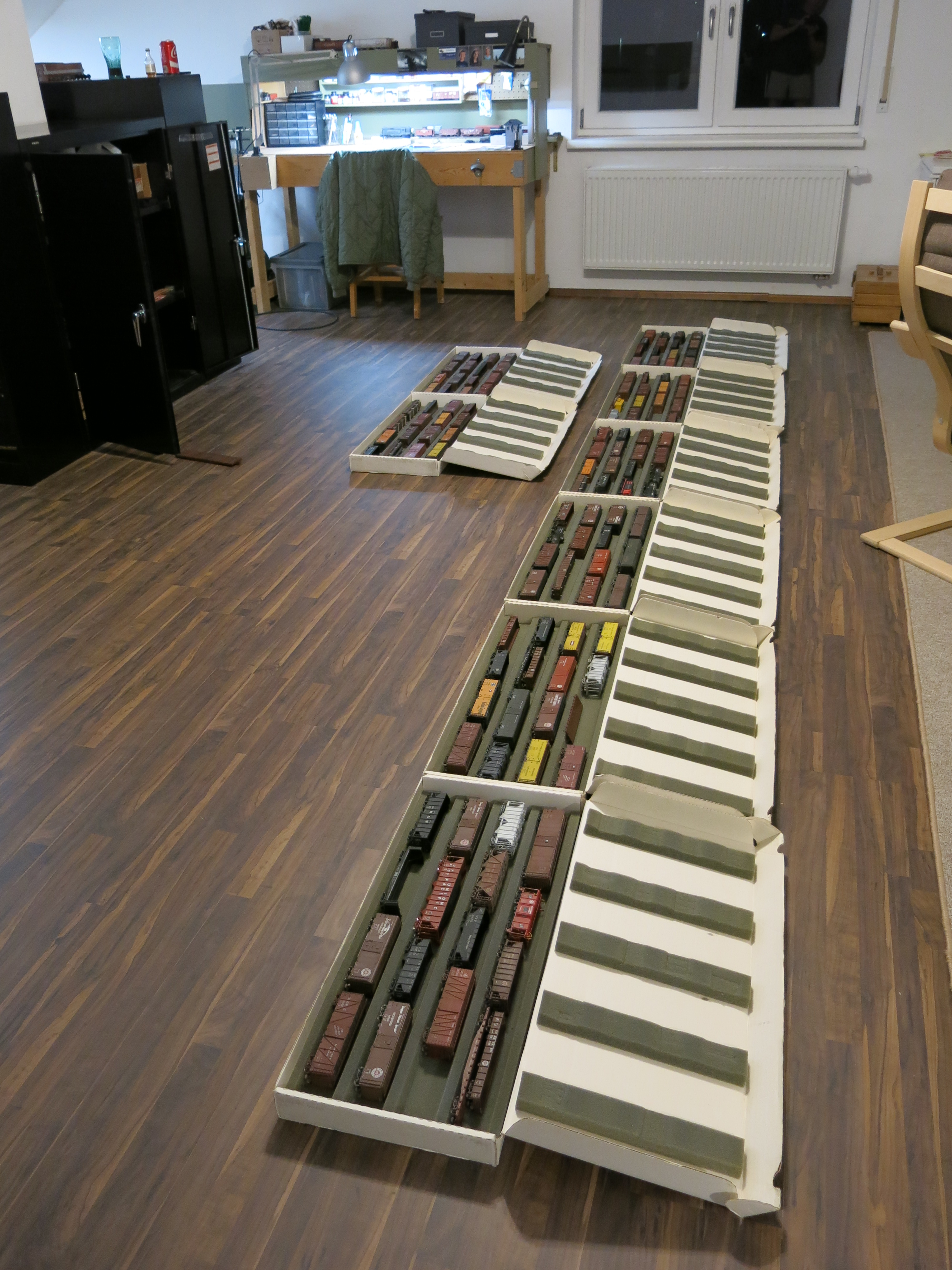



























 Above.
Above. 
